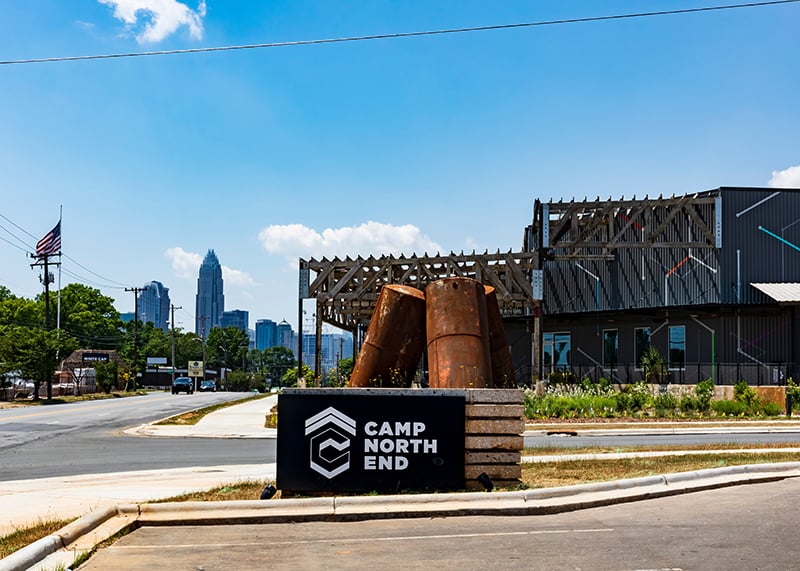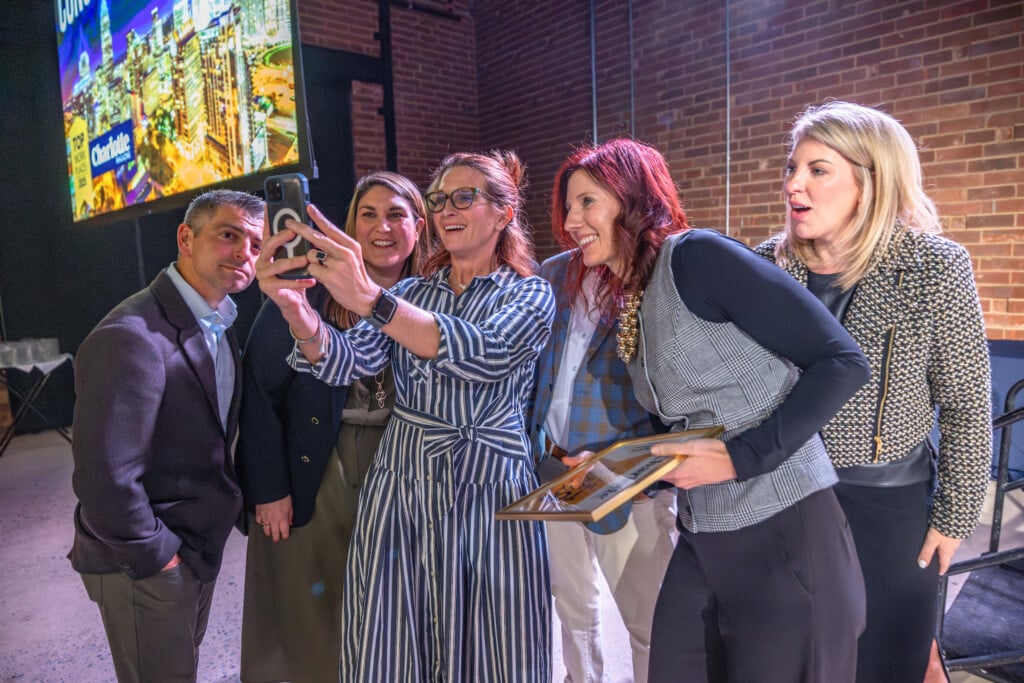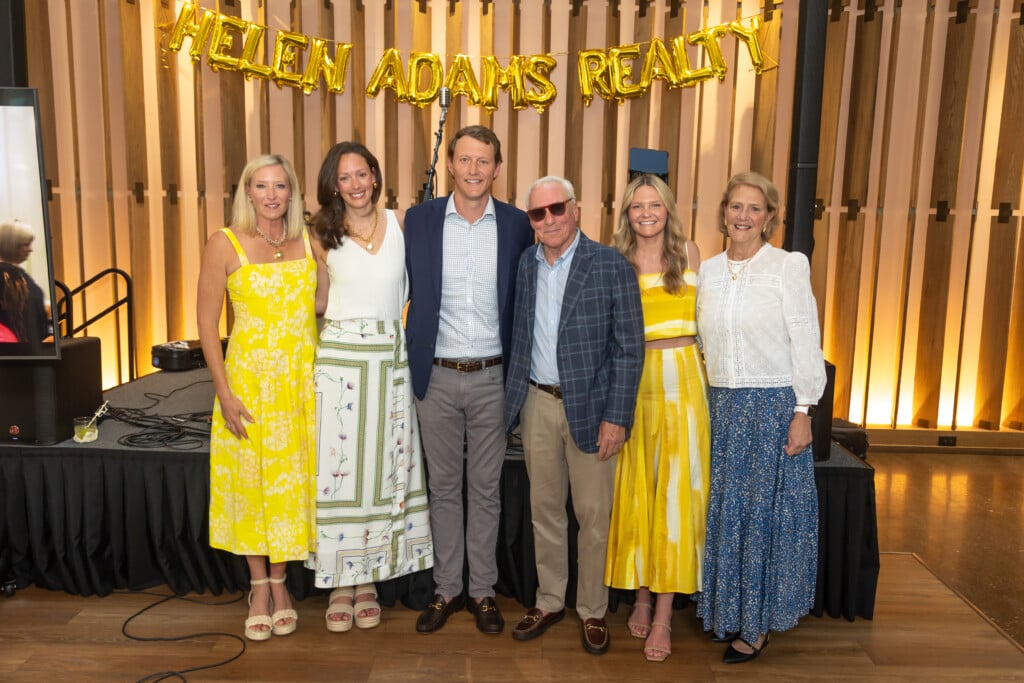Camp North End Still Has A Lot of Work To Do
Nearly a decade ago, Camp North End opened as Charlotte’s most ambitious adaptive-reuse project. Its potential remains only partly realized

There are moments when Camp North End feels sublime, like on a recent Friday afternoon. A little girl wrestles giant Legos—they’re taller than she is—in an outdoor play space while “thwocks” echo from the pickleball courts at the huge Tipsy Pickle.
At other moments—too many, truthfully—it feels like there’s more life at Hebrew Cemetery across Statesville Avenue.
A couple of hours before that little girl tries to heft those giant Legos, a lone family plays table tennis in the small courtyard between the bookstore That’s Novel (closed that morning) and the plant store Grow (also closed). A young woman named Clare and her husband, Tate, pass the time with Tate’s parents before driving them to the airport for their flight home to Illinois.
The four of them decided to visit Camp North End, the sprawling, 76-acre former factory site just north of uptown, only to find nothing open beyond the coffee bar Hex, one of the only places open every day. “We were expecting more to do,” Clare admits. None of the restaurant kiosks on Keswick Avenue are open yet, and most of the shops don’t open until afternoon. Clare and company get ready to pack it in and head for the Sullenberger Aviation Museum at the airport. But Clare and Tate like what they see, she says: “We’re coming back this evening, definitely.”
It’s been almost 10 years since Camp North End’s developers started on a 20-year plan to turn the massive property, which dates back to the 1920s, into one of the biggest adaptive-reuse projects in the Southeast.
At the halfway point, how that’s going depends on where you look, when you go, and who you ask.

Ford Green at Camp North End. During the winter, this area transforms to an ice skating rink for Camp North Pole.
Damon Hemmerdinger is co-president of ATCO, the New York-based company that started the development in 2016, and he sees a major project that is hitting its stride. He says 22 of the 76 acres are developed now, with 450,000 square feet of retail and office space.
“We had 750,000 visits in 2024,” he says. “Foot traffic is way up. We expect more than a million visits in 2025. Other than people who lived in the north end (of Charlotte), this part of the city was almost unknown to the wider community.
“If you’d asked me in 2016, would we have become a place where a million people come nine years later, I would have said that was a wildly ambitious goal.”
While Camp North End expects to announce a half-dozen new tenants by mid-June, the biggest new thing as of this writing in May is the opening of Kinship East and West. They’re two multifamily buildings that include more than 300 apartments, plus innovations like seven spaces that are retail on the bottom and residential on top—a return to the days when people could actually live above stores. In May, three months after Kinship opened, all seven retail spaces had been leased, and the rest of the buildings were about 20 percent occupied. When filled, they’ll house 450 to 500 people.
Kinship is the first two of what Hemmerdinger expects to eventually be eight or nine multifamily buildings on the property. “(Kinship) will be a game changer, in terms of how the place fills and how it functions,” he says.
Camp North End regulars, though, say it still has a long way to go. Lashawnda Becoats, the founder of Storm Creative Solutions, goes to Camp North End several times a week to work and network. “They have a lot of work to do,” Becoats says, referring to Camp North End’s progress. She thinks ATCO doesn’t do enough to market to tourists like that table tennis-playing family: “Locals, we love it, we need it, we use it.” But they need more, she says, like a supermarket or something that brings you there every day, not just small boutiques you might visit a few times a year. “We need things that say, ‘I can only get that at North End.’”
The struggles of small retailers drew attention in late 2024. Baker Samantha Ward, the owner of Wentworth and Fenn and one of the first Camp tenants, announced she was closing and posted on social media about her frustrations trying to survive there as a retailer.
Today, Ward is the pastry chef at L’Ostrica, and she’s reticent to speak about her Camp North End experience. She blames herself for a lot of what happened, saying she should have adapted her business model to do more off-site catering. But it was just as important to make sure her bakery was open as many hours as possible, meaning a lot of overhead to keep her bakery cases full and her employees paid.
Camp North End is such a big property, it can be hard to navigate for people who come the first time, she says, and that makes it tough for customers to find shops like hers. The complex has plenty of signs to denote the four areas: Keswick Avenue (mostly restaurant kiosks), The Mount (mostly shops and offices), the Boileryard (more boutiques and trailers that house offices and stores), and Crossroads (outdoor entertainment and events). But it can be baffling to figure out what’s where and how to get from one area to another.
“Should they have finished it before they added tenants?” Ward says. “It’s cool, but it’s different.” She still lives nearby and, like Becoats, wishes the area had more useful retail, like a supermarket. West and northwest Charlotte have always struggled to acquire those everyday retail spaces. Camp North End hasn’t changed that.
“It is strange,” she says, “that this giant property has nothing around it.”
Built in 1924 as one of the largest Ford factories in the country, Camp North End became a government facility during World War II, when it housed a supply depot. During the Cold War and into the 1960s, the Ford factory was modified to manufacture missiles. (The Army’s site designation, Charlotte Area Missile Plant—CAMP—stuck.) Eventually, the whole place was sold to Eckerd, later bought by Rite Aid, which used the sprawling campus of factory buildings and warehouses as a distribution center.
In the early 2000s, a team of developers and local officials launched an ambitious attempt to address North End’s chronic underdevelopment. They focused on blighted neighborhoods like Greenville, Genesis Park, Druid Hills, and Double Oaks—all near what is now Camp North End.
Consultant David Howard of DL Howard Consulting was a City Council member in those years and also worked with the Charlotte-Mecklenburg Housing Partnership (now DreamKey Partners), which was trying to bridge the distance between those underserved neighborhoods and uptown Charlotte.
Howard remembers the moment Camp North End was conceived: The Housing Partnership hired the innovative development firm Shook Kelley, which had worked on the successful redevelopment of South End. Terry Shook, the principal partner, is an expert in the planning and development of urban environments.
During a meeting to discuss a vision plan for North End, Shook looked over maps of the area. “Terry pointed at the warehouses and said, ‘Hey, what’s that? That feels a lot like South End felt when we started over there,’” Howard remembers. As for Camp North End today, Howard points to its sheer size. “You can’t take on anything that big,” he says with a laugh, “and not go completely bankrupt and not consider that a success.”
Camp North End’s struggles to find the right retail mix doesn’t surprise Shook. “Retail is the most brutal thing to get right,” he says. “It is the most unforgiving.”
Shook says he understands what Camp North End is trying to be. Similar projects are in progress all over the world, taking existing spaces and finding new lives for them. “There is this yearning among people who love urban spaces for what I call ‘managed dystopia,’” he says. In other words, people want urban spaces that feel edgy and a little raw—but with regular hours and street life that feels safe. Charlotte needs spaces like Camp North End, he says.
“Charlotte is an adolescent outgrowing its trousers,” he says. “We’re attracting ever more diverse people, all looking for a safe, urban experience. Places like Camp North End are extremely important to the vitality of the city.”
Shook thinks Camp North End will eventually reach its potential as long as the developers stay focused on the mix of tenants and retail. Camp North End, he says, “is a little baby bird in the nest. It’s going to grow up. There’s nothing that can’t be fixed with 5,000 more people living on-site. And they have the land for that.”






